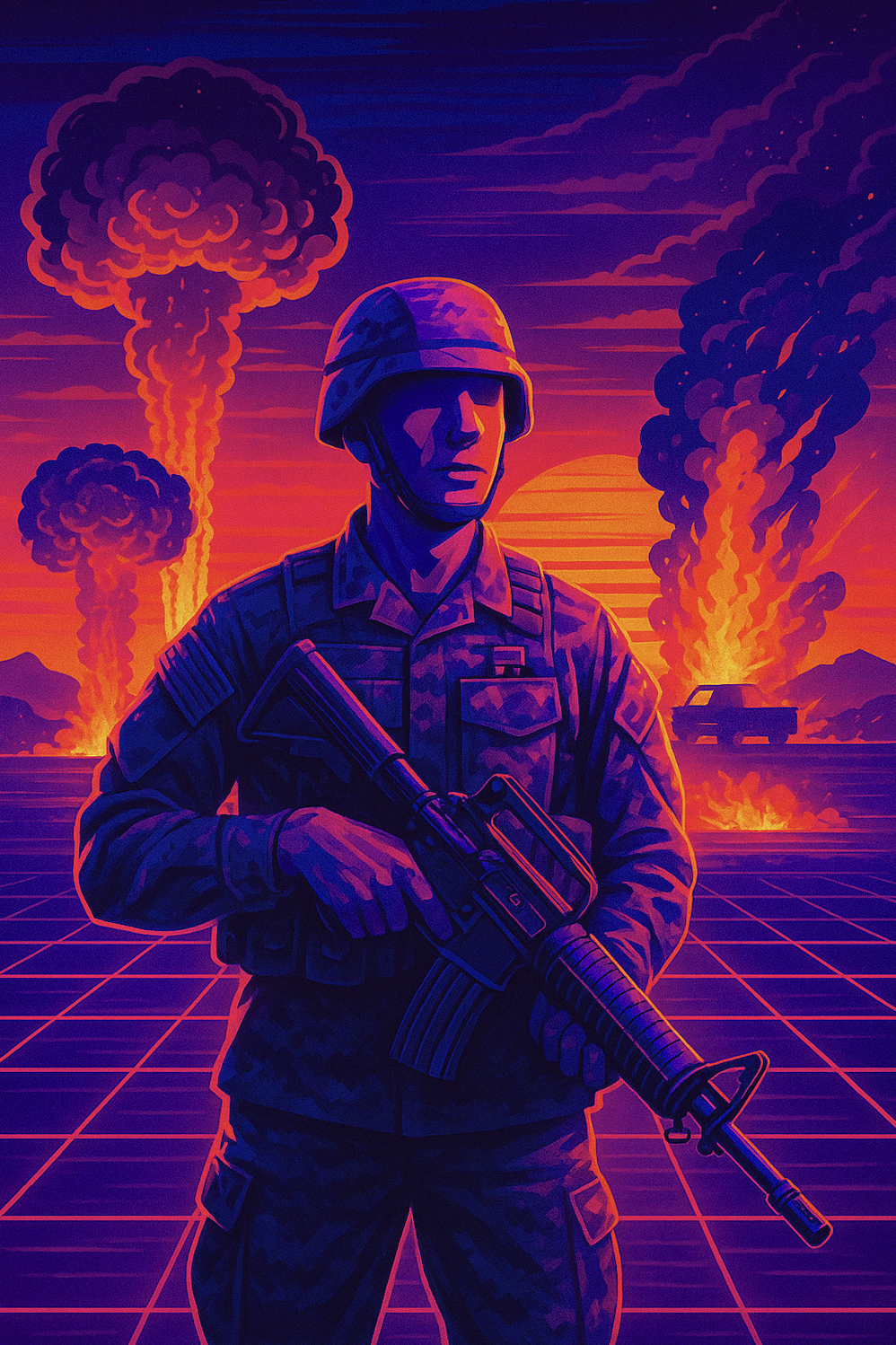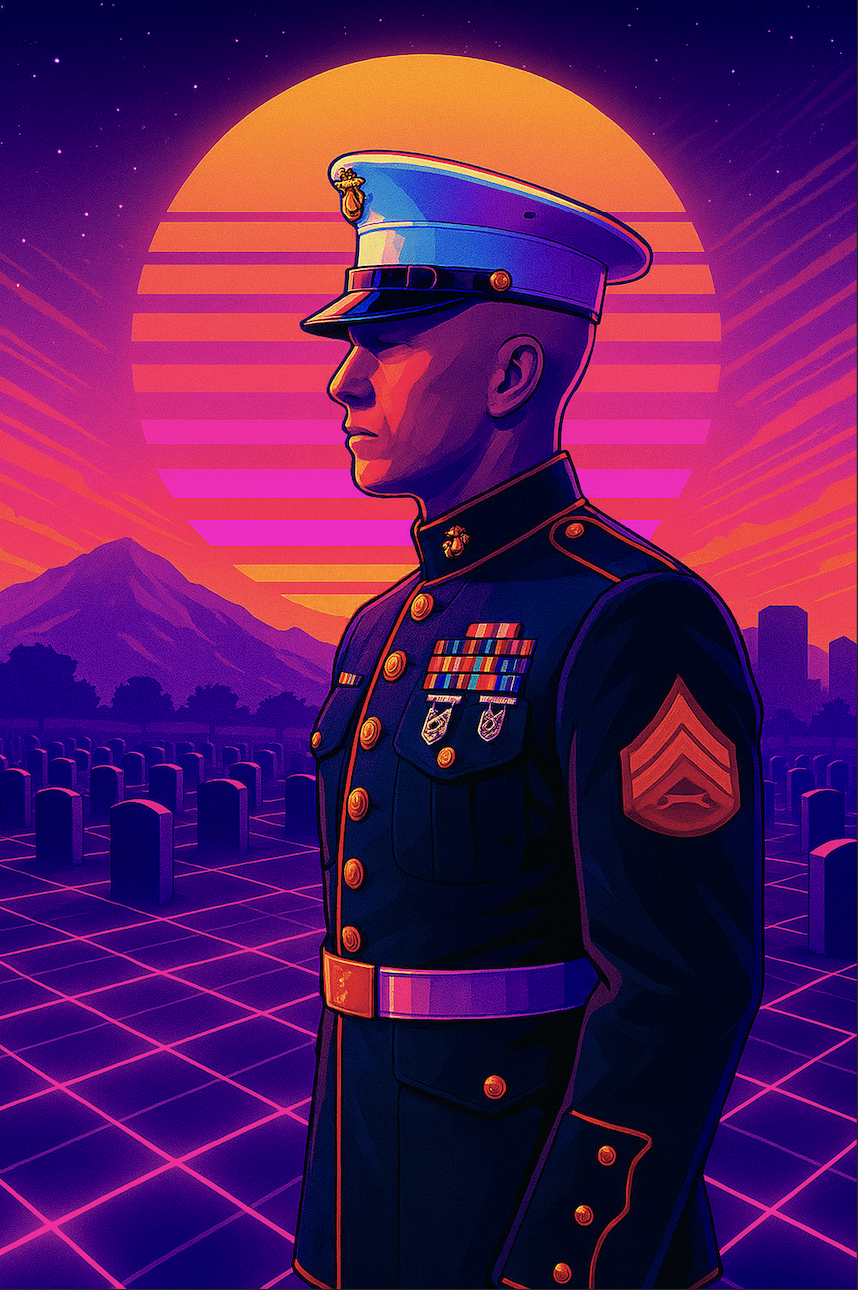11.11: War After War A Veteran’s Battle to Heal
1,400 WORDS (~6 MINS READ)
Veterans Day Reflections
Veterans Day is not a holiday for those who served. It is a day when the country pauses, but veterans remember. While others see flags and parades, many of us feel pride tied to a quiet ache. Veterans carry memories the world never sees and wounds the body never forgets. When people say ‘thank you for your service,’ the heart does not always know where to place those words. They land somewhere between honor and horror.
This year, 11 11 followed the 250th Marine Corps Birthday. That lineage shaped me since the day I watched the Twin Towers fall at seventeen and enlisted, believing service would give my life meaning. At MCRD San Diego, I broke a seventy-two pull-up record and served as platoon guide. The first death I witnessed happened in boot camp when a recruit in my squad collapsed on the obstacle course after being pushed too far. War begins long before the battlefield and continues long after it ends. Later, when the drill instructors learned I was a musician, I was publicly humiliated and reassigned. I carried both pride and shame. I wanted to be a warrior, and that tension followed me into adulthood.
From September 11 to Iraq and the Wounds That Stayed
In 2004 and 2005, during the early years of the post-9/11 wars, my unit at HWHS-3 transitioned from the Marine Corps band into a machine-gun platoon that deployed to Kuwait and Iraq. We were tasked with defending the Command Control Center (CCC) at Al Asad during Operation Phantom Fury. We lived through infiltration attempts, rocket attacks, vehicle bombs, and firefights that etched themselves into the nervous system. The body comes home from war long before the mind does. At twenty, witnessing death became a brutal kind of familiarity, stillness after impact, the dust after explosions, scenes carved into my nervous system that never leave. Hypervigilance became survival.
Released on Netflix on November 3, 2025, In Waves and War follows former Navy SEALs navigating the unseen aftermath of combat as they seek healing through supervised psychedelic therapy. It offers a rare and honest look at the “war after war” many veterans silently endure.
I later returned to the Marine Corps band, outwardly composed while inwardly carrying the shockwaves of combat. The most wounded parts of a veteran are often invisible.
After completing my first tour of military service in the USMC, I transitioned into diplomatic protection and intelligence work for the Department of State, serving in Russia, Germany, and Cyprus. These were cities filled with beauty but shaped by geopolitical tension. The vigilance that kept me alive in the Middle East stayed with me everywhere. Coming home does not end the war. It only changes its terrain. Years later, I changed my name because the young man who enlisted and the man who survived these chapters were no longer the same person.
“The violence of combat assaults the soul. The real battle begins when you come home.”
Veteran Suicide and the Crisis We Carry in Silence
After leaving the Marine Corps, I poured myself into social entrepreneurship. One of my earliest commitments was helping build Team Rubicon in its first days. Back then, it was only a handful of veterans trying to transform our wounds into service. When veterans rebuild the world, we are also rebuilding ourselves.
In 2011, at a fundraising dinner I organized in La Jolla with National Geographic filming, we received the news that our friend and co-founder Clay Hunt had died by suicide that day. Clay had been pleading with the VA for help. The system moved too slowly. It failed him. Veteran suicide is the clearest measure of pain that arrived long before support ever did.
The VA reports seventeen veteran suicides a day. Independent researchers estimate closer to forty four. More veterans have died by suicide than in the Iraq War itself. I have lived on that same edge. For many of us, suicidal ideation is not a desire to die. It is a desire for the suffering to stop. Veterans do not break because they are weak. They break because they have carried what others cannot imagine.
I have also known homelessness, another silent crisis. The uniform that once earned respect does not protect you from the world once the service ends. Healing came slowly through mindfulness, nature, therapy, community, spiritual practice, and eventually psychedelic medicine when all other paths proved insufficient.
Collapse, Misdiagnosis, and the Long Return to Myself
When I returned from service, I was diagnosed with severe anxiety, hypervigilance, and various physical acute pains. Still, no one spoke of post-traumatic stress disorder (PTSD) or moral injury. I lived with intrusive thoughts, guilt, shame, insomnia, irritability, migraines, fatigue, and the belief that I should have prevented deaths I could not control. Many veterans believe they are broken when, in fact, they are living with the natural consequences of surviving unimaginable experiences.
So I did what Marines do. I fought harder. I meditated for thousands of hours. I lived in ashrams. I explored CBT, DBT, EMDR, IFS, breathwork, somatic therapy, biofeedback, vagus nerve stimulation, naturopathy, supplements, group work, family therapy, energy healing, shamanism, and every healing path I could find. I often say I feasted at the holistic buffet. Veterans do not pursue healing for novelty. We pursue it to stay alive.
Working with Vietnam, Iraq, and Afghanistan veterans taught me a universal truth. Trauma wears many faces. Moral injury reaches into the soul. And anyone, veteran or civilian, can carry an inner war no one else sees.
When COVID arrived, I thought I was healed, and then the last stabilizing structures in my life collapsed. My business dissolved. I became a father during global upheaval. Exhaustion overtook me. Only then was I formally diagnosed with PTSD and later recognized as a disabled veteran by the VA. It did not solve everything, but it validated what I had survived. I had never been weak. I had been wounded.
“You do not ever leave war behind. You learn how to carry it differently.”
Psychedelic Medicine and the Path That Helped Save My Life
Eventually, after exhausting traditional paths, I turned to psychedelic medicine. Like many veterans, I did not approach it casually. I approached it to survive. Under guidance, I worked with ayahuasca, San Pedro, psilocybin, LSD, MDMA, and other medicines. Safe and responsible guided psychedelic therapy did not erase my past. They helped me stop fighting myself.
These medicines reached the deepest layers of moral injury, grief, shame, and trauma. They helped me return to presence, especially in the relationships I hold most dear, such as with my parents, children, the creator, and, most importantly, with myself. They helped me remember the inherent worth buried beneath the wounds.
Yet this path also carried consequences. In family court, my healing journey was misunderstood and used against me. Psychedelic therapy helped save my life, yet stigma contributed to a temporary separation from my children for admitting to my professionally guided, responsible use of these substances personally. I share this carefully because it reflects a larger truth. Sometimes healing is punished before it is understood.
Veterans have become leaders in psychedelic reform because when traditional systems fail, those who want to live find new paths. Organizations like Heroic Hearts Project, VETS, The Mission Within, Veterans Mental Health Leadership Coalition, the Grunt Style Foundation, and Team Rubicon provide spaces for veterans to reconnect, heal, and rebuild meaning.
The New Mission: Becoming a Warrior of Peace
My journey home has moved through war and international espionage, moral injury and depression, seasons of homelessness, moments of mystical awakening, psychedelic rebirth, and the heartbreak of temporary separation from those closest to my heart. And yet, I am still here. Healing is possible even after the deepest ruptures.
Today, my mission is to guide others through their own inner terrain. Whether combat veterans, parents struggling in silence, burned-out leaders, or anyone facing their own hidden battles, I walk with them as they find their way back to themselves. The real warrior is the one who learns to bring peace to their own inner battlefield.
I am grateful to my brothers and sisters in service, to those who helped me survive, and to the communities and medicines that helped me reclaim my life. To my blood and soul family for remaining steadfast when others turned their back. I also know the work is not finished. Healing is not a destination. It is a lifelong devotion.
If you are a veteran or someone who loves one, know this: you are not alone. The war does not have to end your life. There is a path home, and it is yours to walk. Every veteran carries a story. Every story deserves a way back to wholeness. And every human being deserves the chance to become a warrior of light.
“The deeper the darkness, the greater the opportunity for light to shine.””
Begin with a brief conversation to explore if this path is right for you. If this may support someone, share it. And if you feel called, book a call.



